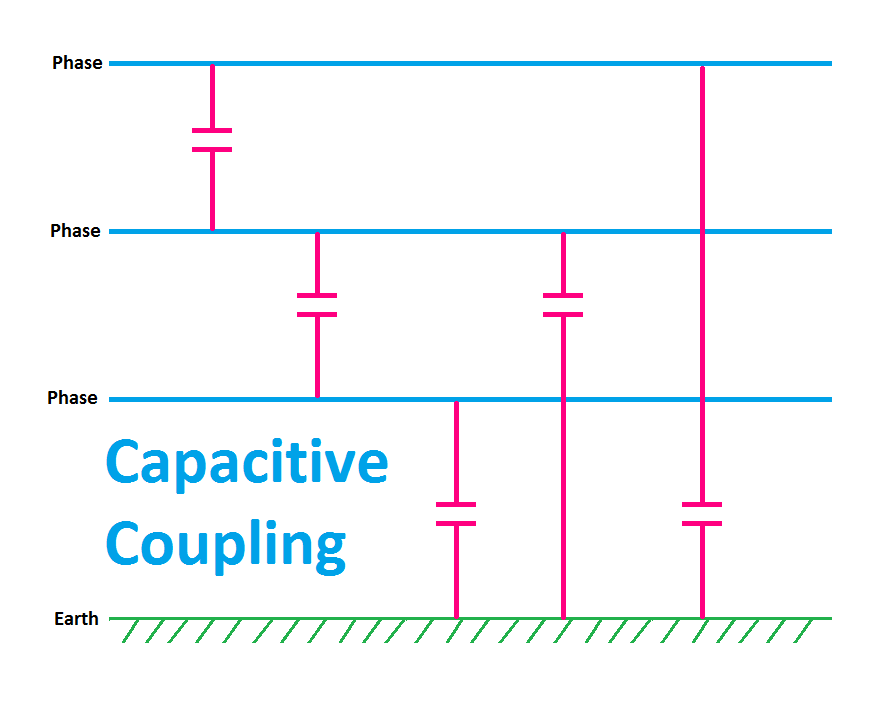Capacitive Coupling Causes, Effects, Uses, Examples
What is Capacitive Coupling?
The transmission of electric current from one circuit to another circuit or from one point to another point of the same circuit through the electric field created by the capacitance effect is called capacitive coupling. Capacitive coupling is also known as electric field coupling or electrostatic coupling or AC coupling. Accidentally or manually created Capacitive coupling can be seen in different types of electrical circuits and equipment from high voltage to low voltage.
The capacitive coupling has some advantages which is why sometimes we manually create the capacitive coupling. The capacitive coupling has some disadvantages also, which is why sometimes we need to take some action to eliminate the accidentally created capacitive coupling effect.
What are the Causes of Capacitive Coupling?
As I told you capacitive coupling may happen accidentally or manually created.
- When two current-carrying conductors are placed at a very minimum distance. A capacitance effect may occur between those two wires or conductors that can cause to pass an electric current from one conductor to another conductor due to this capacitive effect.
- Capacitive coupling due to the Parasitic Capacitive effect is also may happen accidentally.
- The capacitive coupling can be created manually by connecting a capacitor between two nodes of an electrical circuit.
- The Gimmick loop is a very simple and easy way to make the capacitive coupling. It is basically closely spaced two strands of wire.
- The capacitive coupling depends upon these important factors - Distance between two nodes, capacitance value, frequency, the impedance of the victim circuit, Insulation, dielectric gap medium, or space.
Capacitive Coupling Effects
- The accidental effect may cause to flow unwanted leakage of current flow in the circuit or system.
- The accidental effect may create a dead short circuit or unwanted voltage drop.
- The manually created effect helps to filter or flow the required current only. It can block unwanted currents.
- The manually created capacitive coupling will pass the electric current with certain characteristics.
Examples and Uses of Capacitive Coupling
- The most common example is in overhead transmission lines, the capacitive or electrostatic coupling may happen between two live conductors or live and earth.
- Another important example is, In PCB(Printed Circuit Boards), where capacitive coupling happens due to the Parasitic Capacitive effect if two different conductive tracks are very close to each other.
- In analog electronic circuits such as amplifier circuits, filter circuits, and power supply circuits, capacitive coupling is used to block unwanted signals and to pass the desired signal of a certain frequency.
- Capacitive coupling is also used in digital electronic circuits for the transmission of electronic signals with zero DC components which is known as DC Balanced Signal.
- Capacitive coupling can be used to couple output with an input of an oscillator or amplifier circuit to get a continuous repetitive signal in a closed loop system.
- The simplest polarized electrolytic capacitor can be used for the Direct current circuit where the alternating signal will ground easily and non-polarized capacitors such as ceramic capacitors, and polyester capacitors are used in alternating current circuits where the DC component can be blocked easily. Also, the type of connection(series connection or parallel connection) is very important.
Read Also:
Thank you for visiting the website. keep visiting for more updates.

